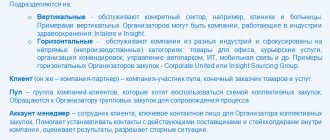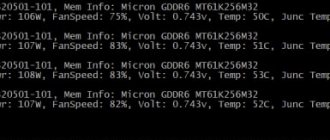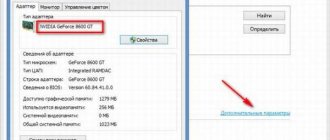In this guide, we'll look at the different payment methods (or reward systems) provided by mining pools and how they can affect your profits.
There are many different payment methods, but we will look at the most common:
- PPS - Pay Per Share
- FPPS - Full Pay Per Share
- PPLNS - Pay Per Last (N)umber of Shares
Pay-Per-Share (PPS)
This payment method is quite simple. You get paid for each valid share sent . Each share costs a certain amount of BTC or any other mined cryptocurrency.
The cost of the shares is calculated based on the likely number of shares the pool needs to find the block. If a pool statistically needs to send 1000 valid shares to find 1 block or 12.5 BTC (at the time of writing), then each share is worth 0.0125 BTC. As the complexity of the network changes, the price per share also changes.
It is worth noting that you will always receive payment using the PPS method , regardless of whether the pool finds a block or not. This means that a pool can lose money if the pool's luck is low, or make money if the pool's luck is high. According to statistics, the pool's luck should be about 100% (the higher the percentage, the higher the pool's luck).
IDEAL ORDER FOR PPS METHOD: an order at a low price for a longer period, which may not work all the time, but only when the price falls and attracts miners.
Accrual of rewards according to the PPLNS scheme
This system means that the reward is awarded for the last N shares. The method of calculating rewards differs from PPS in that there is no fixed payment per share. The size of the reward depends on the speed of block calculation or the time of the round.
PPLNS is a proportional calculation system, which is technically complex.
If the pool uses PPLNS, then payment is made for shifts (a fixed number of time intervals), and not for the time that passes between finding two blocks.
If it is not possible to find a block for a long time, then the reward gradually increases, otherwise it decreases.
Nothing depends on the miner. You have to wait: you will either be lucky or not. But if the code is found, the miner's reward will be significant.
In terms of technical parameters, the PPLNS system is the most complex, but it is profitable for everyone - both for pools and for miners.
For a miner to make a significant profit with PPLNS, he will have to work in the same pool for an extended period.
With PPLNS, the pool does not need to create a reserve fund, so small commissions are established.
Benefits of PPLNS:
- This scheme is suitable for miners working in the same pool on an ongoing basis, since they receive a significant reward for their shares.
- Honest miners are protected from unscrupulous pool hoppers, since they cannot determine the starting point of the round.
- Lower fees compared to PPS.
The disadvantages of PPLNS include the psychological stress of the miner, because he does not receive a reward immediately, but only after a certain time, during which the required number of shares for the mined blocks must accumulate.
Full Pay-Per-Share (FPPS)
Full Pay-Per-Share or Pay-Per-Share Plus(PPS+) - These two methods are similar and very similar to the regular Pay-Per-Share method, the only difference is that the pool will also pay a transaction fee that is included , if the block is found.
Typically, when a pool finds a block, the reward is distributed among the miners, but with the block reward also comes transaction fees. This reward is earned from every transaction performed on the blockchain (a fee you have to pay when making a transaction). When using the Full Pay-Per-Share method, the pool will also pay transaction fees to miners. For example, Bitcoin block at depth 603308 had a fee of 0.49475167 BTC + 12.5 BTC block reward (source: https://www.blockchain.com/btc/block/603308).
IDEAL ORDER FOR FPPS METHOD: a low price order that may not work all the time, but only when the price falls and attracts miners (lower price).
P.P.S.
PPS (Pay per Share) system - payment occurs for each share (or “share”), i.e. each pool participant receives a fixed fee for the share accepted by the pool. The final reward calculation also takes into account the current block reward and network difficulty. This system is considered the most fair from the miner’s point of view, since his work is paid regardless of the result. However, for the pool, this approach is risky: long periods between blocks and unaccepted blocks lead to losses, and the pool has to pay rewards to miners from its reserves. To create reserves and as a reward for risk, pools operating on the PPS principle increase the commission for miners in advance by 3-7% (and take all the commissions from transactions per block for themselves. What if the commission per block is 5-7 BTC? Miners voluntarily give the pool a very “tasty piece of the pie”). Nowadays most pools use PPS.
Bitmain is preparing 90 thousand Antminer S9 for the upcoming Bitcoin Cash hard fork
Setting up remote access via SSH to rigs running Hive OS
How to use a bot to calculate mining profitability @WhatToMine_bot
PPS: Operating principle
PPS is a pool reward system that is static in nature. That is, each pool participant receives a fixed fee for each share accepted by the pool. If we detail the calculation itself a little, then the calculation of the final reward also takes into account the current reward for the block and the complexity of the network.
This approach to calculating rewards is extremely beneficial to users, because they receive payments for all the work done, regardless of whether a new block was added to the chain. In turn, pools sometimes lose out by paying rewards from their own reserves. It is also worth remembering that all pools operating under the PPS system have fairly high commissions, which partially cover expenses.
The PPS system has modifications: – SMPPS - balls are valued at face value, but there are delays in payments so that the pool can find blocks to replenish the reserve. As a rule, pools with such a system do not charge higher commissions. – RSMPPS is the most profitable system for new participants. The reward is paid in proportion to the ball received from miners for the last block. That is, if a block is not found for a long time, then a debt accumulates, which is paid off only if something remains from the payment for the last block. Those who mined from the first block may not receive a reward for at least half of their work.
PPS: Pros and cons
➕ Psychological. You see how your balance is replenished every day, albeit by pennies, but replenished.
➕ Convenient for small miners, because There is no need to accumulate balls in a round to receive a reward.
➕ Clear for users, stability of payments.
➖ Not profitable in case of long-term mining, because The price of the balls is fixed, and the rounds can be short. On pools with high power, there are many more short rounds than long ones.
➖ Balance freezing or loss of funds. Most pools hold client funds in a hot wallet, i.e. an attacker can steal your honestly mined coins, or the owners of the pools themselves, under the guise of a hacker attack, can appropriate them (there are examples of such cases).
Pay-Per-Last N Shares (PPLNS)
The Pay-Per-Last N Share system rewards miners only after the pool finds a block. This means that you will only receive payment after the block is found. Then the pool “goes back in time” and checks the valid balls sent before the winning block. This is called the "time window". Miners receive payment based on the valid shares they submit in this “time window.”
This method is convenient for miners who do not move from pool to pool and have a permanent connection. Please note that your work (shares) may be lost if you disconnect from the pool before the block is found.
IDEAL ORDER FOR PPLNS METHOD: Fixed order on a large pool that has a high chance of finding a block within the order time limit. Or a standard order, in which miners will be connected for a longer period of time (higher price).
WHAT IS BETTER PPS OR PPLNS?
It is impossible to say unequivocally that PPS or PPLNS is more profitable. It all depends on the power of your hardware, how long you are willing to wait, and the nature of mining you follow. For example, for those users who have fairly powerful equipment and always try to stick to the same pool, the PPLNS system will be more profitable. After working in one system for a certain amount of time, they will be able to achieve net profit for themselves.
If you like to jump from pool to pool, which is not always useful for your status, because such miners are not particularly liked, then it is better to pay attention to pools with a PPS accrual system. In general, everything is learned by comparison, and in order to decide for yourself what is more profitable than PPS or PPLNS, you need to try both types of pools.
— SUBSCRIBE TO OUR CHANNEL IN TELEGRAM @WHATTONEWS
PPS and PPLNS mining: which is better?
51asic
Feb 28, 2022 · 4 min read
We have already described what cloud mining is and how it differs from classic mining in a previous article (https://goo.gl/4iSeoU). If you missed it, we recommend that you familiarize yourself with it first, because today we will talk about the technical side of mining. We will talk about the PPS and PPLNS systems, their pros and cons. Then we’ll try to figure out which one is better.
PPS (Pay per Share) system - payment occurs for each share (or “share”), i.e. each pool participant receives a fixed fee for the share accepted by the pool. The final reward calculation also takes into account the current block reward and network difficulty. This system is considered the most fair from the miner’s point of view, since his work is paid regardless of the result. However, for the pool, this approach is risky: long periods between blocks and unaccepted blocks lead to losses, and the pool has to pay rewards to miners from its reserves. To create reserves and as a reward for risk, pools operating on the PPS principle increase the commission for miners in advance by 3-7% (and take all the commissions from transactions per block for themselves. What if the commission per block is 5-7 BTC? Miners voluntarily give the pool a very “tasty piece of the pie”). Nowadays most pools use PPS.
The PPS system has modifications: - SMPPS - balls are valued at face value, but there are delays in payments so that the pool can find blocks to replenish the reserve. As a rule, pools with such a system do not charge higher commissions. — RSMPPS is the most profitable system for new participants. The reward is paid in proportion to the ball received from miners for the last block. That is, if a block is not found for a long time, then a debt accumulates, which is paid off only if something remains from the payment for the last block. Those who mined from the first block may not receive a reward for at least half of their work.
Advantages and disadvantages:
➕ Psychological. You see how your balance is replenished every day, albeit by pennies, but replenished.
➕ Convenient for small miners, because There is no need to accumulate balls in a round to receive a reward.
➕ Clear for users, stability of payments.
➖ Not profitable in case of prolonged mining, because The price of the balls is fixed, and the rounds can be short. On pools with high power, there are many more short rounds than long ones.
➖ Balance freezing or loss of funds. Most pools hold client funds in a hot wallet, i.e. an attacker can steal your honestly mined coins, or the owners of the pools themselves, under the guise of a hacker attack, can appropriate them (there are examples of such cases).
PPLNS system (Pay Per Last N Shares) - payment is made for the last N shares. The difference from PPS is that there is no fixed payment per share, and in this case the speed of finding a block or the time of the round plays a role. When the pool operates on the PPLNS principle, payment for the share is made not for the time between two found blocks, but for “shifts” - a fixed number of time intervals. With such a system, if a block is not found for a long time, then the payment gradually increases, and if the pool manages to close blocks one by one, then the payment for each individual block decreases. This is where the theory of probability comes into play, and the miner cannot influence the situation in any way. You need to be patient - you are either lucky or not. However, when the code is found and the block is signed, the miners will be “rewarded in full.” The main goal of the PPLNS system is to smooth out the influence of the randomness factor. Technically, it is the most complex, but at the same time it is beneficial both for pools and for those miners who “work” in one pool for a long time. In the PPLNS system, the pool does not need to maintain a reserve fund. As a result, the pool has small commissions and there are no bonuses to the pool for transactions.
Advantages and disadvantages:
➕ The most profitable system for regular miners, because provides for double and triple payment of the share.
➕ Protection of conscientious miners from pool hoppers, because they cannot see where the round began (pull hoppers start mining at the beginning of the round, and if it drags on, they move to another, more successful pool, taking part of the reward from regular miners from the first pool - on PROP systems).
➕ The reward for miners is higher for the same efforts as in the PPS system, and the commissions are lower.
➖ Psychologically it can be difficult, because The miner will not receive the reward immediately, but after a while, because you need to “accumulate” a certain number of accepted shares over several blocks.
PROP pool operating system - this is the simplest scheme in which the reward for the found block is divided according to the ball sent by each miner. After this, the ball counter is reset to zero. Payments under this system are made only after a block is found. Therefore, if a miner comes when a block cannot be found for a long time, then he will receive very little. However, this system is almost never used anymore.
Thus, it is impossible to say unequivocally which system is more profitable. It all depends on the power of your hardware, how long you are willing to wait, and the nature of mining you follow. For example, for users with powerful equipment who always try to stick to the same pool, the PPLNS system will be more profitable. If you like to jump from pool to pool, which is not always useful for your status, because such miners are not particularly liked, then it is better to pay attention to pools with a PPS accrual system.
PPLNS: operating principle
PPLNS refers to proportional award systems. Technically, it is the most complex, but at the same time it is beneficial both for pools and for those miners who “work” within the same pool for a long time. Such a system assumes that the reward is paid not for the number of shares that were sent by the miner during the period between finding blocks, as, for example, in the PROP system, but for the number of shares sent during a certain time period (“shifts”). This period of time is determined differently by each pool.
Let's look at a small example to better understand this reward system:
Let us assume that there is a pool with a PPLNS system and 10 shifts, 1 hour each, where the user occupies 1/100 of its total capacity. So, in order to receive a full reward for the work done, the user must work on the pool for at least 10 hours. To calculate the profit of our conditional pool participant, you can use the following formula:
N(po) = N(pu)*(1/100)*0.3
Where:
N(po) – user reward
N(pu) – pool reward
1/100 – share of the pool participant’s capacity.
0.3 – shift coefficient
Accordingly, if a pool mines 10 bitcoins in 3 hours, then the user receives:
10*(1/100)*0.3 = 0.03 bitcoin
If the reward is received by the pool within 10 hours, then the correction factor is removed and the user receives 0.1 bitcoin.











